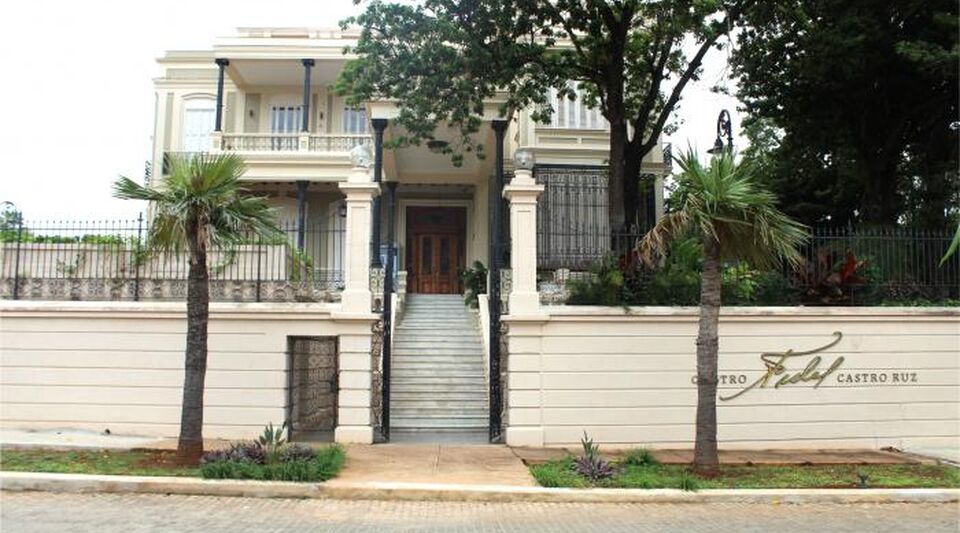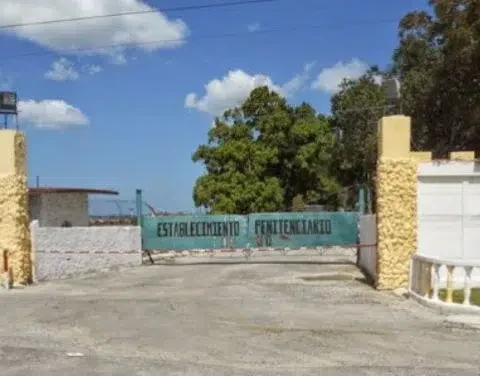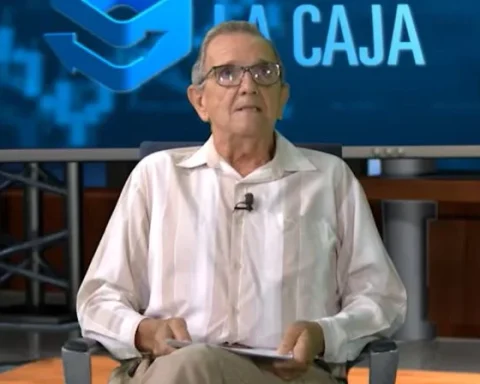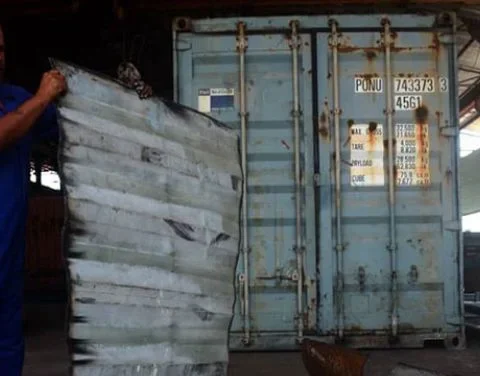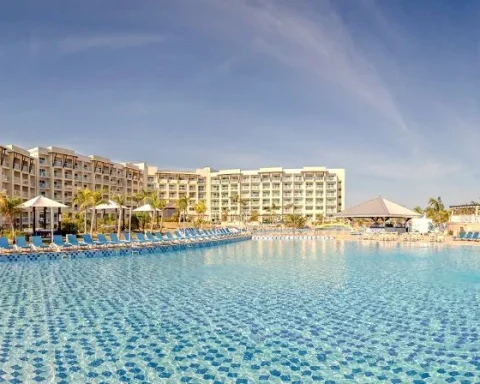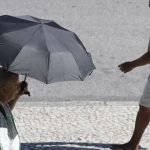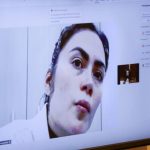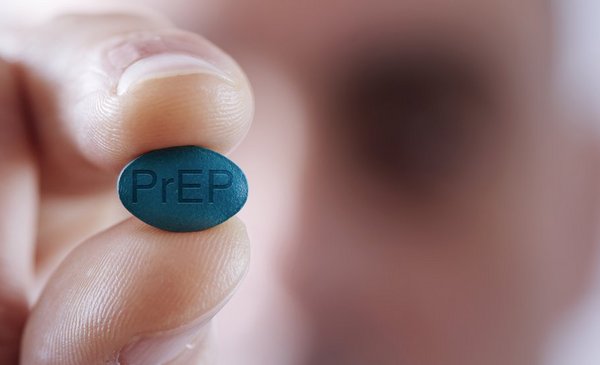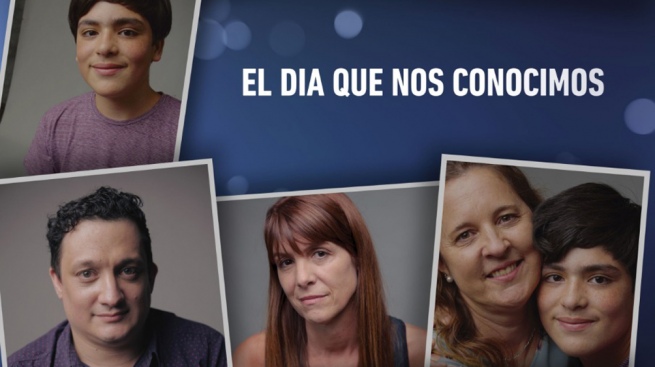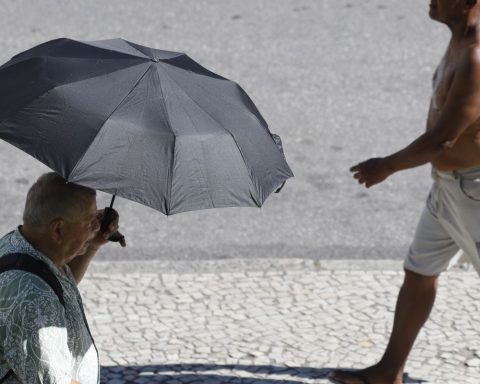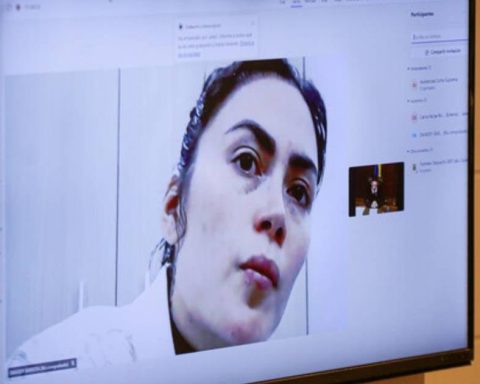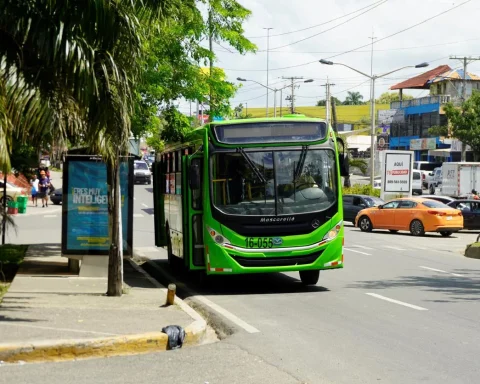A homeless person has been sneaked into the Cuban Police at the corner of Paseo Avenue and 11th Street in Havana’s Vedado. “Please give me something to buy a pizza, I’m hungry,” the woman insisted to the visitors of the brand new Fidel Castro Ruz Center, living testimony of the failure of the story that is told in the museum behind the high wall where opulence reigns and leave out what bothers you.
“They have put in a few million here,” a young woman whispered to her companion this week, when a reporter from 14ymedio He walked the corridors of this kind of temple dedicated to the god of the Cuban Revolution.
the cost of the monumental work is unknown, as the chief of the Documentary Heritage Preservation of the Palace of the Revolution, Alberto Albarino, he refused to answer that question on a tour of the international press. The official declined to say that much of the investment was covered with “donations were received from other countries”, which neither you specified, and therefore has not been a great expense to the state.
the cost of the monumental work is unknown, as the head of the Documentary Heritage Preservation of the Palace of the Revolution, Alberto Albarino, he refused to answer that question on a tour of the international press
Exuberance reigns from the very entrance, with a garden that houses more than 11,000 plants brought from all over the country, but also from outside. Among them are those that form a forest like Birán, the cradle of Castro; trees of the Sierra Maestra, where his insurrection against Batista began; and a sample of his latest eccentricities, moringa, a protein plant to which he obsessively devoted himself in his later years. In addition, there are Venezuelan trees – perhaps part of a donation from Caracas – and rocks brought from the mouths of the La Plata and Carpintero rivers shape a waterfall that falls into a small pond full of tropical fish.
In the middle of this orchard, the jeep that Castro used in the Sierra Maestra. “He came walking here, the difficult thing was to put him inside,” says the essential guide that accompanies visitors through the Center. “This next room is designed for the little ones. So they play didactic games while they admire the jeep of Fidel, “he adds, pointing to the adjoining space.
The Center, inaugurated last Thursday in the presence of the Cuban Government’s staff, in addition to Nicolás Maduro and Raúl Castro, began receiving scheduled visits a day later and, although they are open to the general public and admission is free, many of the visiting groups that coincided with 14ymedio They were made up of officials and members of the Revolutionary Armed Forces.
“Actually it is a museum with a name of something else, you come to know Fidel from the time he was a child until his physical loss,” says the guide as soon as they begin and after the visitors have completed the usual protocol for entering a museum , including security screening of belongings and metal detector. In addition, it is necessary to provide an identification document with which the personal data is recorded in a book.

The mansion, which dates back to the last decade of the 19th century and belonged to a captain from the 1895 war, is guarded by guards in polished shoes, dark suits, and ear rings. They are the shadow of the visitors, aided by dozens of state-of-the-art cameras.
A door from the time precedes another, apparently armored, glass sliding door that protects the air conditioning of the enclosure. The first room on the left, where decorations of the former president are displayed, is decorated replicating the original from more than a century ago. According to the guide, both the furniture and chandeliers as well as the paintings on the walls and other architectural details were restored in detail by managers of the Office of the City Historian.
“They are number 45 even though the commander wore 43. This is because Fidel had a problem with his right foot that forced him to wear a larger last”
Suddenly, in the nineteenth-century setting, the 21st century appears and the corridors of the house discover phrases by Fidel Castro and José Martí in front of the visitor or an interactive painting shows a mosaic that, depending on the point of view, allows one to see one’s face or another. Although a worker at the Center told television that the museum was built with Castro’s wishes in mind, this transmutation of his face into that of the Apostle contrasts with his declared intention that his image should not be worshiped.
Weapons, backpacks or binoculars used by the Maximum Leader in the Sierra Maestra dot the sample, for which the creators have found, in an unusual fact, a Castro defect to expose: boots made by the same shoemaker who made the ones used by the former president in the mountains. “They are number 45 even though the commander wore 43. This is because Fidel had a problem with his right foot that forced him to wear a larger last,” the guide explains.
“At the moment and due to health protocols established by the pandemic, only the Center’s staff can interact with the touch panels,” he adds during part of the tour, “but our goal is for young people and children to make this technology their own and at the same time. take an interest in the life and work of our Commander “, he underlines.
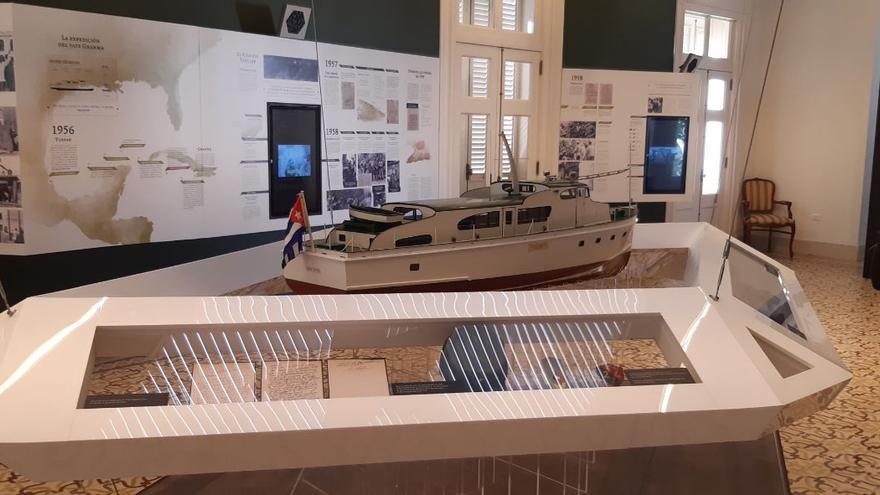
Televisions, interactive, touch and smart screens are distributed in each of the nine rooms that the mansion houses. A modern elevator with a panoramic view, but adapted to the architecture of the place, connects the two floors of the Center, and movement sensors that cause the reproduction of multimedia content as the visitor passes complete the media display. But not all the island’s problems can be kept away: an electric shock that occurred a few days ago affected some of the screens and not all of them function normally.
The selection of the sample has been careful and has avoided showing the setbacks and even the bad company. Going quickly through the fiascos in the style of the Revolutionary Offensive, the failure of the Ten Million Harvest or the social outbreak of August 1994, the Center only shows the victorious side of Castro.
The passages with Carlos Lage, Roberto Robaina and Felipe Pérez Roque have been deleted or conveniently minimized
In the exhibition, the absence of many of the defenestrated people who once shared front pages with the leader is noted. The passages with Carlos Lage, Roberto Robaina and Felipe Pérez Roque have been deleted or conveniently minimized.
The Center is defined as a public institution, destined to disseminate, study and investigate the thought and work of the historical leader of the Cuban Revolution, but it ends up becoming, no matter how much its creators and employees reject it, into a temple dedicated to worship. of Castro.
The names of the rooms give an account of this: the Guerrilla room, to talk about the military Fidel; the Sala La Palabra, to listen to the eternal speeches of the speaker Fidel; the Solidarity room, to tell about its profitable international campaigns; the Commandery room, which portrays places from which he directed operations; and even the amphitheater, soberly named “Fidel talks, I need you.” As a culmination, the Fidel room is Fidel, who made his brother cry last Thursday during the inauguration according to his own words, in which video clips of people who speak (well) about him or, in the words of the Center, are played. testimonies “of how much it penetrated the soul of the people.”
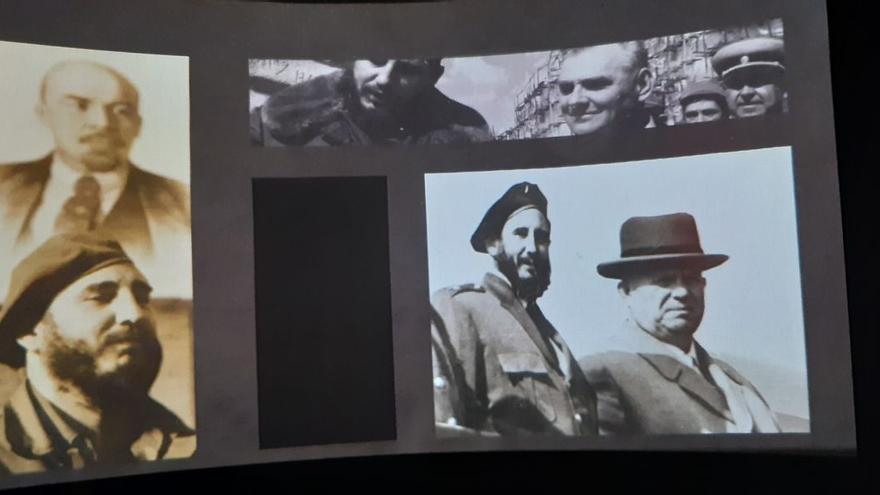
During the tour made by 14ymedio, One of the visitors asked the guide if there was a cafeteria or space in which to buy something to drink or eat, as is usual in other museums. “For that we anticipated that there would be cafeterias around the Center. Most are private, have the capacity to serve many people at the same time and offer a good service,” explained the employee.
“Even if it’s water and coffee, they should sell here, because the journey is long,” insisted another member of the group. “We plan to offer that service later, but nothing more, we do not want this full of people lining up to buy chocolates or bread with ham. Whoever comes has to do it because they really want to know the life and work of our leader,” replied the guide.
The management of the Center seemed, in that gesture, to have decided to expel the merchants from the temple. But it won’t be like that at all. A 3D printing house that houses the facilities will make miniature replicas of the Revolution Square and busts of heroes from the Independence struggles that can be purchased by visitors in the future store in which, however, and complying with the Will of the former president, busts of the man who gives the temple its name may not be bought.
________________________
Collaborate with our work:
The team of 14ymedio He is committed to doing serious journalism that reflects the reality of deep Cuba. Thank you for joining us on this long road. We invite you to continue supporting us, but this time becoming a member of our journal. Together we can continue transforming journalism in Cuba.
